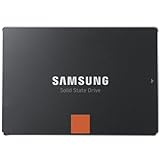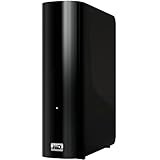Samsung 840 Series 2.5 inch 120GB SATA III internal Solid State Drive (SSD) MZ-7TD120BW
http://ecx.images-amazon.com/images/I/41yhL6UiSOL._SL160_.jpg
- Optimized to improve everyday PC productivity, including web-browsing, email, multimedia and gaming
- Enables you to boot up your computer in as little as 15 seconds
- Energy efficient – improves battery life by up to 50 minutes
- Solid-state design provides greater shock protection for data and brushed metal case blocks dust and corrosion
- Worry-free data security with AES 256-bit full-disk encryption
- 100-percent genuine Samsung components from the #1 memory manufacturer in the world
- Backed by a three-year limited warranty
- Superior multi-tasking performance with 4th-generation 3-Core Samsung MDX Controller
Upgrading your PC with a Samsung 840 SSD is the most economical way to breathe new life into an aging PC. The 840 reads, writes and multi-tasks at incredible speeds, enhancing boot-up speed, application loading and multi-tasking performance. It’s more than an upgrade, it’s a complete transformation of your PC.
Samsung Desktop Memory
Samsung 840 Series 2.5 inch 120GB SATA III internal Solid State Drive (SSD) MZ-7TD120BW
List Price: $ 139.99
Price:
















Good but only if you can get it at the right price,
First of all, the Samsung 840 uses triple-level cell (TLC) memory vs. the multi-level cell (MLC) memory used for almost all other SSDs. So what is the difference between TLC and MLC? With TLC memory, 3 bits of information (8 possible values) are stored per cell instead of the 2 bits (4 possible values) in MLC memory. This might sound better but it also means that the cells are used more and there is less voltage fault tolerance. In the most simple terms, you can think of cells being “filled” or “emptied” by applying voltage. When 3 bits (8 possible values) of information are stored per cell, the SSD may have to apply voltage to the entire cell multiple times even though just one bit of information is encoded (depending on the bit being changed). The multiple voltage applications to each cell also slows down the write speeds and causes more wear in general.
Performance-wise, the Samsung 840 is actually worse than the previous generation Samsung 830. On the Passmark benchmarks, it is slightly lower than the OCZ Agility 4 which uses asynchronous MLC NAND flash.
Right now, the top three SSDs (best selling and best reviews) on Amazon are the OCZ Vertex 4, Samsung 830, and the Crucial M4. However, all three of these SSDs are cheaper and they perform better than the Samsung 840. Eventually, the TLC NAND should mean that the Samsung 840 will sell for less because less NAND is used. However, it is not worth it right now. To be safe, I would say that you should wait until the drive is at least 10-20% cheaper than the three drives above due to the uncertainty of how it will perform in the long run.
One puzzling thing is that I couldn’t find any mean time before failure (MTBF) estimates for the 840, while the MTBF for the 20nm MLC based 840 Pro is 1.5 million hours (lower than the 2 million hours for many 25nm MLC drives). Also, it is interesting that the drives are not 128GB, 256GB, 512GB. There are probably three reasons for this. The TLC NAND manufacturing process has lower yields so they have to “turn off” a portion of the cells to account for this. This is similar to what Nvidia does for their GPUs (16 functional streaming multiprocessors become GTX 580, 14-15 functional streaming multiprocessors become a GTX 570, etc…) Another possibility is that they anticipate that there will be more wear to the TLC NAND so that there is an unused memory bank to replace any dead cells. The third and most likely reason is a combination of the two, i.e. a portion of the turned off cells are nonfunctional due to the new manufacturing process and the remaining portion of the turned off cells are reserved for replacement.
I handle tech purchase decisions for my department and so I bought one Samsung 840 to test for due diligence but won’t buy more until they become much cheaper.
——————————————————-
12/4/12 Update
As predicted, these drives dropped in price quite a bit. TLC NAND is about 25% cheaper than MLC NAND so that the price of these drives should converge to a ratio of around 75% of the price of a MLC SSD in the long run.
Was this review helpful to you?

|My old macbook moves……>>>>,
I have the very first Macbook (intel core duo), and kicked myself back in 2006, when the duo core 2 model was released a month later.
Anyway I held on to my Macbook, and it has been used every single day since.
I decided to replace the original 60G toshiba hard drive, and what a blessing.
My Macbook uses SATA 1, rated for 1.5 Gb/s, this drive is SATA III, rated for 6 Gb/s. Therefore, I expected marginal performance.
So here is marginal for ya:
Start-up, literally 20 seconds, nearly instant shutdowns. Apps open very fast, internet web pages load a lot faster, especially with graphics and java/javascripts/flash
I’m using MAC OS 10.6.8 (Snow Leopard), TRIM is enabled, but only for Apple hard drives. A nice program called “Trim Enabler” the old version (1.2), will modify a few kernel extensions to get it to work for you. You need put in your favorite search engine “Trim Enabler 32-bit Support”. Be careful not to upgrade to 10.7 / 10.8 with the 32-bit software installed.
Hopefully I can get 6 more years outta my Mac. 🙂
Was this review helpful to you?

|Great for my mid 2012 MacBook Pro 13″,
Great for my mid 2012 MacBook Pro 13″
Install was very easy, and just back up from time machine, easy.
It’s super fast. now my macbook pro start in 10 seconds.
500GB is perfect size. I also installed bootcamp Windows 7 and Office, Photoshop, etc..
Very smooth.
Was this review helpful to you?

|